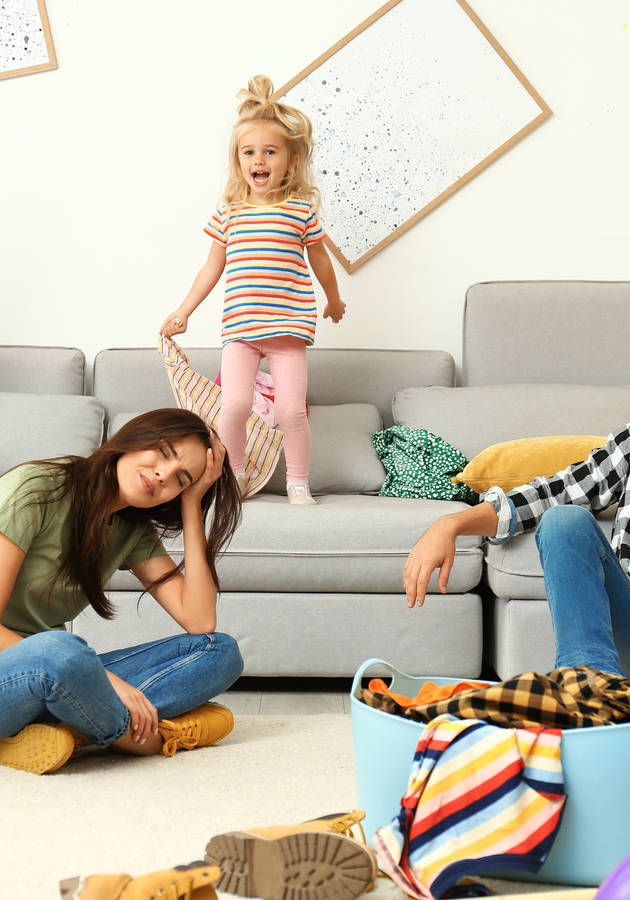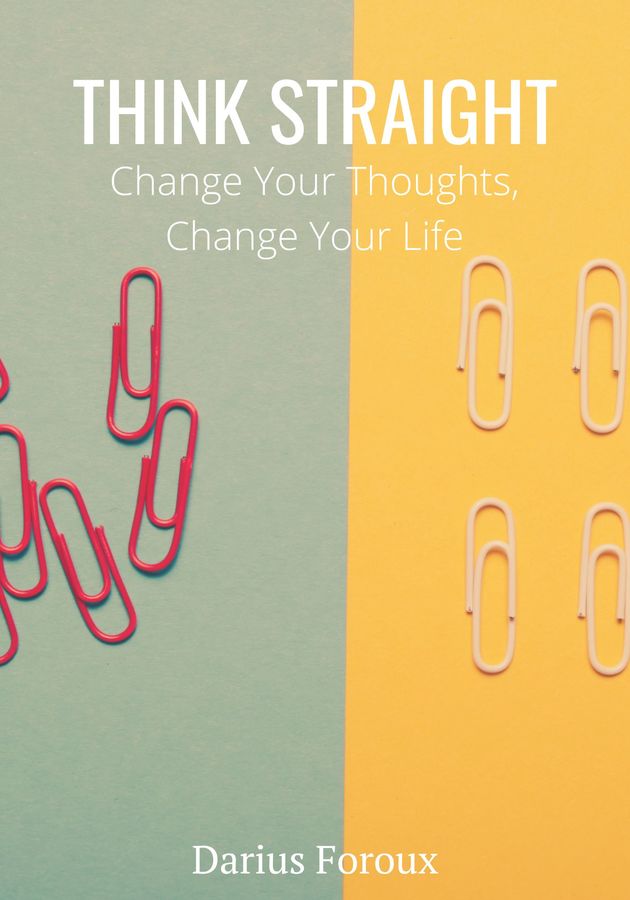Intentionally short – “as when you have a toddler, time is a luxury you often don’t have” – “Potty Training in 3 Days” by B. Thompson is true to its title. It contains “proven steps and strategies on how to potty train your child” – and it covers everything from the initial signs that the toddler is ready to making sure that your strategies work.
So, get ready to find out when is the right time to start potty training your child and prepare to learn how to do it in just three days!
Potty training myths – debunked!
As Thompson writes – and as many parents know – “potty training isn’t the easiest thing in the world. It can truly put your patience to the test.” Unfortunately, it is often made even more difficult by widely held beliefs that are plain wrong. So, let’s start by debunking the three most common ones:
- “If I put my baby on the potty seat, they will easily know what’s up!” Children learn so many things by sheer instinct that many mothers and fathers expect them to immediately understand the uses of the potty, which often is the source of their irritations and annoyances. In truth, “your child will probably have no idea what the potty is to start off with, never mind how to use it.” Put in simpler words – training your kids to use the potty is not a matter of “if,” but a question of “when.”
- “Your child's life will be ruined if you mess up their schedule for potty training.” An exaggeration, of course. Nothing in particular will happen if you allow your kid to go potty when it’s past their bedtime. “Potty training,” writes Thompson, “as much as it is for your child, is a good training for you, too. It teaches you to be patient. It also helps you to believe in what your child can do, instead of what he cannot do.”
- “It will just lead to arguments between my child and me.” Many things cause arguments between children and parents, but that’s the price of growing up. Helping your child with their math homework might probably lead to arguments as well, but you’ll never back away from doing it because of a few grumpy faces. Instead, you’ll focus on the positive aspects of the task. Think of potty training in a similar manner: you’re just helping your child become the best person they can be. That’s it.
Signs that your child is ready for potty training
With the myths debunked, it’s time to check if your child is ready to be potty-trained or not. “If a child is not ready,” warns Thompson, “no matter what you do, you won’t be able to train them.” But how would you know if you can start training a kid to go potty? Here are a few indicators that should help:
- Have you noticed your child replicating some of your actions?
- Is your child eager to please you? Do they show a desire to be praised?
- Is your child already able to stay dry for at least two hours during the day?
- Has your child shown some interest in wearing underwear?
- Does your child seem interested in the toilet, the bathroom, or the potty chair?
- Does your child know the difference between a dry and a wet diaper? Have they ever complained about the latter?
- Does your child want things to be in their proper places?
- Has your child expressed interest in dressing themselves?
- Can your child walk or run now?
- Have you noticed your child using some expressions or words before wetting its diapers?
- Is your child familiar with “potty lingo” (wet, dry; messy, dirty)?
- Is your child capable of sitting and rising from a potty chair?
- Does your child know how to pull their pants down and put them up again?
If your answer to a lot of these questions is “yes,” then your child is probably ready to be potty-trained.
3 days of potty training
Start the potty-training process with a positive attitude. Do whatever you can to take the fear out of it: if your kid thinks that using the potty is a fun activity, everything will go much smoother. So, it’s not a bad idea to let the child decorate the potty “to help to increase their positive associations with this process.” Using a doll through the process can also be helpful.
- Day 1. Choose a day when you are completely free. Tell your child something along the lines of “Today we are going to learn to go potty like a big boy.” Make it sound exciting. For the entire first day, your child should be bottomless – so you know when it needs to go to the toilet! Don’t panic when that happens! Be prepared and calmly tell your child to hold it in. Then, put the toddler in the potty as soon as possible. When done, offer a reward. Say – “Wow, well done!” – and clap your hands. Repeat the process whenever necessary.
- Day 2. Use this day to schedule potty breaks throughout the day. Of course, be prepared to deal with them if they happen outside the schedule. The child can wear pants on the second day, but make sure they are easy to get off. Since their interest in the potty may start to diminish as the day goes by, try to keep your child amused by allowing them to play with their favorite toy while on the potty.
- Day 3. By now, you can start training your child to tell you if they need to go potty. Do this by “emphasizing how well they are doing when they do manage to tell you.” Rewards are essential as they create the necessary connections in their brain. Of course, don’t worry if things don’t work out the way you imagined – just be patient and repeat the process for a few days more. After all, children learn at different rates.
Some rewards and incentives during training
Potty training is both easier and more effective with the right incentives. Here’s a list of just a few encouragements and rewards you can use in the process:
- An appropriate book or a toy. To make potty training “a fun and engaging learning experience” for your child, give a potty-training related toy or a book, such as “Once Upon a Potty,” “I Want My Potty,” or “Sam’s Potty.”
- A coloring book. After each potty-training session, let your child’s creative talents go wild with a coloring book of their choice.
- A drink-and-wet doll! Drink-and-wet baby dolls are the perfect gift for any kid beginning or finishing potty training. They wet their reusable diapers after drinking, so, by bringing the doll to the potty seat at the right moment, you can turn potty training into a fun game – both for you and your kid!
- A toy “vending” machine. Toy vending machines have little toys inside them. You can let your toddler get one after each potty session.
- A lollipop tree. This is nothing more than a makeshift tree made from lollipops. Allow your kid to take one from the tree after each successful potty session.
- Help your child decorate a door hanger. It doesn’t matter what’s on the door hanger. What matters is that the child has something to have fun with when they feel like they have to go potty. Stickers, candies, toys, labels with fun activities – they should all work!
How to keep your potty-training methods working
Although your child should understand the uses of the potty by the third day, it’s a very bad idea, of course, to just stop the training right then and there. You must make sure your kid has internalized the lesson. Therefore, heed the following few pieces of advice:
- Be patient – even when the child says they don’t want to go potty. This can be frustrating, yes, but it’s better to give some space than traumatizing your child..
- Take a laid back approach. The more laidback you are, the less your child will be resistant to your training methods. “The key here is to realize that a child learns via positive reinforcement and not by being reprimanded,” advises Thompson.
- Clap your hands, laugh – keep a lively atmosphere during each session. Kids are naturally playful, so the less gamelike the potty-training process looks, the less interested in it they will be.
- Respect your child’s learning curve. All things take time. Some kids learn easily, but others simply don’t. It’s not because there’s something wrong with them. It’s just that they find some things more interesting than the others. Don’t judge and don’t get upset: just trust the process.
- Be consistent. Consistency is key. Once you start potty training your kid, don’t stop until the habit is engraved in their character. If you need to travel in the meantime, bring the potty seat with you so practice can continue. Whatever you do, don’t skip a day, or it might take a few steps back.
Signs that your kid is already potty-trained
You can wrap up the training once you start noticing the following few changes in your kid’s behavior:
- Your kid starts telling you regularly that their underwear is wet. If your kid knows when their underwear is wet, then you can be sure they have already acquired a sense of hygiene and would prefer using the potty to wetting their diapers.
- Your kid is eager to get their rewards. This is a sure sign that your kid’s brain has started making associations between actions and rewards. “When a child learns the ideas of rewards and positive reinforcement, they begin to have that healthy competitive streak in them,” Thompson informs us. “This is something good because it shows that they're understanding what you’re trying to teach them. They know they will get rewards if they do something good, so of course, they will work on doing that.”
- They show interest in the potty chair and start using it from time to time. When your kid starts going to their chair and tries to go potty on their own – even if it’s not at the proper time – you can be sure that they have understood the concept behind the reward system. They don’t just want to please you – they also know what’s right.
- They are proud of their new underpants. When your kid wants to pick new underpants, they want to show you that they are no longer a “baby.” And this is what potty training is all about: growing up.
Final Notes
“Potty Training in 3 Days” bears all the marks of a self-published book: it seems inadequately structured, hastily written, and repetitive at times.
Even so, it also seems highly practical and useful. And that’s all that matters in the end, isn’t it?
12min Tip
No matter what you try to teach them, be patient with your kids and make the learning experience a game.




























